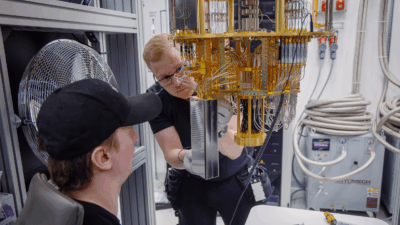Google Announces Massive Wind Farm Deal
Google announced it is signing power purchase agreements with two offshore wind farms to power its data centers in Europe.

Sign up for smart news, insights, and analysis on the biggest financial stories of the day.
Google is buying wind farms to offset the carbon footprint created by its data farms.
On Thursday, the tech giant announced it is signing power purchase agreements with two offshore wind farms to power its data centers in Europe, marking the company’s biggest wind deal of its kind.
Data in the Wind
Powering data centers takes a lot of energy, and Google has ambitious plans to match every hour of energy use with an hour of clean energy by 2030 (the key word here is match, not necessarily replace). But wind power remains a costly endeavor, stifling the industry’s growth. Which is why renewable energy producers have leaned into the burgeoning power purchase agreement (PPA) economy, in which companies committed to using clean energy, like Google, write big checks to help support developing new plants.
With this latest PPA, Google takes one step further toward its energy goals — while adding more sustainable energy to the power grid in the process:
- Google’s PPAs are with the CrossWind and Ecowende consortia, two joint enterprises run by Shell and Eneco, and will center on two wind farms off the coast of the Netherlands. Together, the plants will add about 700 megawatts of capacity to the country’s grid, good for about 6% of the nation’s overall annual energy consumption.
- Google, meanwhile, says that combined with previous PPAs, its two Dutch data centers will start running on about 90% clean energy as soon as this year. The company has also signed similar, but smaller, PPAs to support data center power consumption in Poland, Italy, and Belgium.
Lump of Coal: The proliferation of power-guzzling artificial intelligence technologies will only add to the problem of Big Tech power demand. In fact, electricity consumption at US data centers is expected to triple its 2022 levels by 2030, according to Boston Consulting Group. That’s reshaping the entire energy industry, and, crucially, keeping coal plants alive longer than expected, per a recent Bloomberg report. US energy companies have now delayed closing almost 24 coal plants in the US that were scheduled to shut down between 2022 and 2028, according to coal trade group America’s Power. Move fast and break things, Silicon Valley — just please not the planet.











